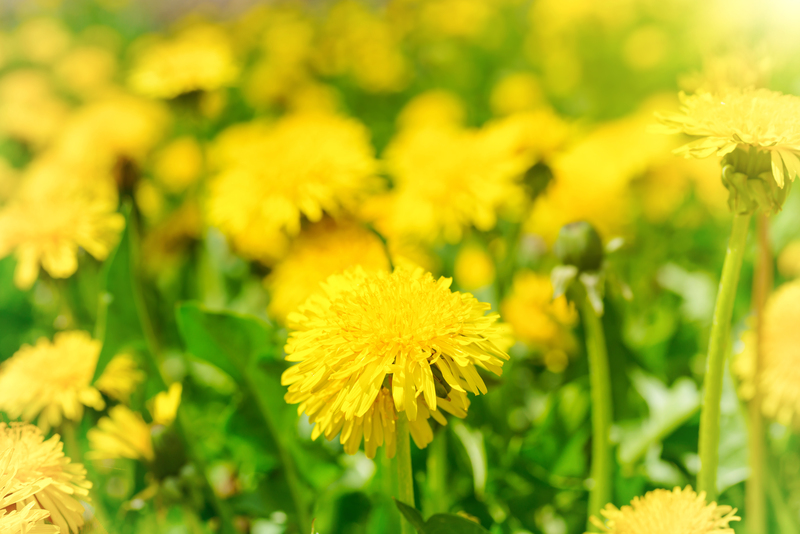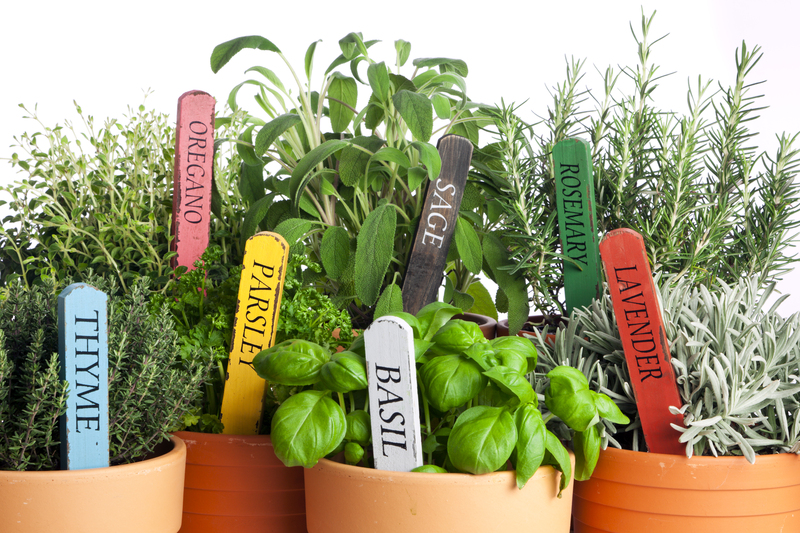Guarding Your Lawn from the Harsh Effects of Summer Drought
Summer drought can wreak havoc on even the healthiest lawns. With extreme temperatures, prolonged periods of dryness, and increased water restrictions, keeping your grass lush and vibrant becomes a formidable challenge. But don't worry--by understanding threats and implementing smart lawn care practices, you can shield your yard from the harsh effects of summer drought and maintain a resilient, green oasis.
Understanding Summer Drought and Its Impact on Lawns
Before we dive into actionable steps, it's important to recognize how drought affects your lawn. During a drought, lack of rainfall, high temperatures, and strong sunlight combine to:
- Reduce soil moisture: Grass roots can't draw up enough water to stay hydrated.
- Increase heat stress: Excessive heat can cause grass to wilt, fade, and eventually go dormant.
- Promote weed and pest infestations: Drought-stressed grass is weaker and less able to fight off unwanted invaders.
- Inhibit growth and recovery: Scarce water slows healing from mowing, foot traffic, and other stresses.
These challenges underscore the importance of proactive lawn care during summer drought to maintain both aesthetics and grass health.

Signs of Drought Stress in Your Lawn
Recognizing symptoms early can help you take action before severe damage occurs. Look out for:
- Bluish-gray or dull grass color
- Wilted or curled grass blades
- Footprints that linger after walking across the lawn (grass doesn't spring back quickly)
- Brown or yellow patches appearing throughout the lawn
- Slow or halted grass growth
Identifying drought symptoms early is the key to protecting your lawn against long-term harm.
Water-Smart Strategies for Your Lawn
1. Water Deeply and Infrequently
During times of drought, deep, infrequent watering is much more effective than frequent, shallow irrigation. This approach encourages grass roots to grow deeper, making them more resilient.
- Water early in the morning (between 4 a.m. and 9 a.m.) to reduce evaporation and allow water to soak in before the heat of the day.
- Aim for one to 1.5 inches of water per week. Use a rain gauge or small container to measure how much water your lawn is actually receiving.
- Soak the root zone (4-6 inches deep) to encourage deeper root growth and drought resilience.
2. Comply with Local Water Restrictions
Always follow your local municipality's watering regulations. Many areas enact restrictions during severe drought to conserve water. Smart irrigation systems or manual scheduling can help you stay compliant while still giving your lawn what it needs.
3. Adjust Sprinkler Heads for Maximum Coverage
Check your irrigation system regularly for leaks, clogs, or misaligned sprinkler heads. Direct water to the grass roots--not sidewalks or driveways. Consider using drip irrigation or soaker hoses to minimize water loss and maximize efficiency.
Optimize Your Lawn Care During Drought Conditions
1. Mow High and Less Frequently
Keeps your grass slightly longer--typically at 3 to 4 inches--during summer drought. This helps shade the soil, reduce evaporation, and promote deeper root growth. Avoid removing more than one-third of the grass blade in a single mowing.
- Sharpen lawnmower blades: Dull blades tear grass, making it more susceptible to drought stress.
- Leave grass clippings on the lawn: Mulching clippings helps retain moisture and adds organic matter to the soil.
2. Postpone Fertilizer and Chemical Applications
Applying fertilizer during drought can burn your grass and exacerbate stress. Delay fertilizing until normal rainfall returns, focusing instead on watering and mowing management. The same goes for herbicides--limit their use to avoid harming struggling grass.
3. Control Foot Traffic
Avoid unnecessary walking or heavy play on drought-stressed areas. Compacted soil and crushed grass can make it difficult for turf to recover, especially during periods of reduced growth.
4. Manage Weeds and Pests Carefully
Drought-affected lawns are more vulnerable to weeds and pests since their growth is slowed and their defenses are weakened. Hand-pull visible weeds, spot treat faster-growing patches, and monitor for pest activity. Selectively treat infestations with the least-toxic options available.
Choosing the Right Grass Species and Lawn Alternatives
1. Drought-Tolerant Grasses
If you're planning to reseed or renovate your yard, select drought-resistant grass varieties like:
- Bermudagrass: Highly tolerant to heat and drought, ideal for warm climates.
- Zoysiagrass: Deep-rooted and resilient, handles both heat and drought well.
- Tall Fescue: One of the most drought-tolerant cool-season grasses.
- Buffalograss: A native prairie grass that requires minimal irrigation.
- Fine Fescues: Includes hard, chewings, and red fescues, all noted for their drought resistance.
Consult with your local extension office or garden center for species best suited to your region and soil type.
2. Lawn Alternatives for Extreme Drought
When drought becomes persistent, consider alternatives such as:
- Groundcovers (e.g., clover, creeping thyme, sedum)
- Native prairie grasses or wildflowers
- Mulched or stone garden beds
- Artificial turf (for ultra-low-maintenance landscapes)
These alternatives require much less irrigation and can provide attractive, eco-friendly solutions.
Soil Health: The Foundation of a Drought-Resistant Lawn
1. Core Aeration
Aerate your lawn annually to alleviate soil compaction and increase water, air, and nutrient movement to the roots. Autumn or early spring is the best time to aerate cool-season lawns, while warm-season lawns benefit from late spring aeration.
2. Enhance Soil Organic Matter
Incorporate compost, topsoil, or other organic amendments to improve water retention and root development. Over time, healthy soil structure helps your lawn better withstand periods of extreme dryness.
3. Mulch Around Trees and Borders
Apply a 2- to 4-inch layer of organic mulch around trees, shrubs, and flower beds to conserve moisture, moderate soil temperature, and thwart weeds. Never pile mulch against tree trunks or mow right up to the bark--this can cause rot and stress.
The Power of Smart Landscaping and Hardscaping
- Reduce your total lawn area by creating beds, pathways, patios, or decks. This requires less water and maintenance overall.
- Use drought-friendly plants in your landscape design.
- Install efficient irrigation systems like drip lines or timers to minimize water waste.
Smart landscaping not only cuts down water use but adds curb appeal and biodiversity to your property.
Long-Term Steps for Lawn Drought Protection
1. Lawn Renovation and Rejuvenation
After a particularly tough drought season, your lawn may need extra help to recover. Consider slice seeding, overseeding, or patching thin areas with drought-adapted species. Fall is generally the best time for these activities in cool-season climates, while late spring is ideal for warm-season lawns.
2. Rainwater Harvesting and Sustainable Irrigation
Set up rain barrels or cisterns to collect rainwater for future use during dry spells. Consider also the use of smart irrigation controllers that automatically adapt to weather conditions, drastically improving water use efficiency.
3. Monitor and Adapt
Keep a seasonal lawn care calendar and adapt your strategy to match evolving weather patterns, soil conditions, and grass growth. Take regular soil tests to check nutrient levels and pH, and tailor fertilization or amending to current needs.
Common Myths About Lawn Care During Drought
- "Watering lightly every day is better for your lawn." Not true--deep, less-frequent watering is far more effective.
- "More fertilizer will help grass stay green through drought." In fact, fertilizing stressed lawns is harmful and encourages shallow root growth.
- "Grass that turns brown is dead." Most lawn grasses go dormant and will recover when conditions improve, as long as the crown stays alive.
Knowing the facts can help you make wise decisions for your lawn's long-term health.
When to Call a Lawn Care Professional
Persistent dead patches, pest infestations, or mysterious lawn diseases may require expert intervention. A certified lawn care professional can:
- Diagnose problems quickly and accurately
- Recommend drought-tolerant alternatives
- Offer advanced care, like core aeration or overseeding, with specialized equipment
Don't hesitate to seek expert help if your efforts aren't paying off.

The Environmental Benefits of Drought-Smart Lawn Care
Practicing drought-resilient lawn maintenance is more than just protecting your own patch of green. Environmentally, these strategies:
- Conserve precious water resources
- Reduce runoff and prevent pollution
- Decrease the need for chemical inputs
- Boost local wildlife and pollinator habitats
- Support long-term soil health and biodiversity
A sustainable approach benefits you, your community, and the planet.
Conclusion: Protecting Your Lawn from Summer Drought
Guarding your lawn from the harsh effects of summer drought requires a combination of knowledge, planning, and adaptability. By focusing on deep watering, strategic mowing, soil health, proper plant selection, and smart landscaping, you can maintain a beautiful, drought-tolerant turf through even the most challenging seasons. With these comprehensive strategies, you'll protect your lawn and contribute to a more sustainable environment all summer long.
Remember:
- Observe your lawn's needs and adapt as weather changes.
- Choose drought-resistant solutions whenever possible.
- Sustainability is key for lasting lawn beauty, even under summer's toughest conditions.
With diligence and care, your lawn can weather the harshest summer droughts and continue to be a green and thriving part of your home landscape!



